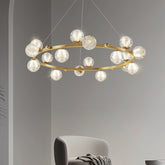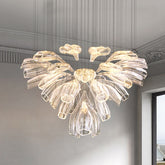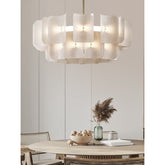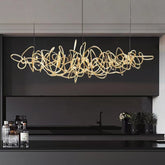Behind the Scenes: A Look at the Furniture Manufacturing Process in 2023
From our homes to offices, restaurants to hotels, furniture is a vital component that not only provides comfort but also adds to the aesthetic appeal of our surroundings. It’s a fair assessment to say that furniture is an essential part of our daily lives. Furniture manufacturing is a significant industry that plays a critical role in the economy of many countries too. The global furniture market was valued at approximately $638 billion in 2022, and it is expected to grow at a CAGR of 5.8% from 2023 to 2028.
The furniture manufacturing industry is constantly evolving as well, driven by changing consumer demands, technological advancements, and sustainability concerns. In recent years, the industry has faced several challenges too, including rising raw material costs, supply chain disruptions, and labor shortages. However, manufacturers have also embraced innovation, automation, and sustainability to overcome these challenges and meet the evolving needs of consumers.
In this article, we will take a behind-the-scenes look at the furniture manufacturing process in 2023. We will explore the design and prototyping process, the materials used, the manufacturing process, the technology used, and the packaging and shipping of finished products. We will also discuss the challenges faced by the industry and the future outlook for furniture manufacturing. By the end of this article, you will have a better understanding of how furniture is made and the factors that shape the industry.
Design and Prototyping
Design is a crucial element of furniture manufacturing for sure, as it influences the functionality, ergonomics, aesthetics, and overall quality of the product. The design process involves several stages, including conceptualization, sketching, rendering, and prototyping. Here's a closer look at each stage.
Importance of design in furniture manufacturing:
Design plays a vital role in the success of a furniture product. A well-designed product can attract customers, differentiate from competitors, and create brand value. Moreover, the design also impacts the efficiency and cost-effectiveness of the manufacturing process. Therefore, manufacturers must invest in design to create innovative and appealing products that meet the needs of the target market.
Overview of the design process:
The design process begins with ideation, where designers brainstorm ideas and concepts for the product. They consider factors such as function, form, materials, style, and trends to create a compelling design. Once they have a basic concept, they move on to sketching, where they create rough sketches of the product. This allows them to visualize the product and make changes before moving to the next stage.
Use of computer-aided design (CAD) software:
With the advancement of technology, designers can now use computer-aided design (CAD) software to create detailed and accurate 3D models of the product. This allows designers to create virtual prototypes that can be tested and modified before moving on to the next stage. CAD software also helps to improve collaboration between designers, engineers, and manufacturers, reducing the risk of errors and improving efficiency.
Prototyping and testing:
Once the design is finalized, a physical prototype is created. This allows designers and manufacturers to test the product's functionality, durability, and aesthetics. They can identify any design flaws or production issues and make necessary changes before mass production. Prototyping also helps to reduce the risk of product failure and improves the overall quality of the product.
Simply put, the design process involves ideation, sketching, rendering, and prototyping. The use of computer-aided design (CAD) software has revolutionized the design process, allowing designers to create accurate 3D models and virtual prototypes. Prototyping and testing help to ensure the functionality, durability, and aesthetics of the product before mass production. By investing in design, manufacturers can create innovative and appealing products that meet the needs of the target market.
Materials and Sourcing
Furniture manufacturing involves the use of various materials, each with its own unique characteristics and properties. The choice of material depends on the design, function, and cost of the product. Here's a closer look at the types of materials used in furniture manufacturing, sourcing of raw materials, and sustainability and eco-friendliness considerations.
Types of materials used in furniture manufacturing:
The most common materials used in furniture manufacturing include wood, metal, plastic, glass, and textiles. Wood is a popular choice due to its durability, natural beauty, and availability. Metal is preferred for its strength, versatility, and modern look. Plastic is used for its lightweight, affordability, and ease of maintenance. Glass is used for its transparency, elegance, and durability. Textiles such as leather, cotton, and polyester are used for upholstery and provide comfort, style, and functionality.
Sourcing of raw materials:
The sourcing of raw materials is a critical aspect of furniture manufacturing. Manufacturers source materials from different regions based on availability, quality, and cost. Wood is sourced from forests, and it is essential to ensure that the wood is sustainably harvested to prevent deforestation and promote reforestation. Metal and plastic are sourced from mines and factories, and it is important to ensure that the production process is environmentally friendly and that workers are treated fairly. Textiles are sourced from farms and factories, and it is essential to ensure that they are grown and processed sustainably and that workers are paid a fair wage.
Sustainability and eco-friendliness considerations:
Sustainability and eco-friendliness are becoming increasingly important considerations in furniture manufacturing. Manufacturers are taking steps to reduce their carbon footprint by using sustainable materials, reducing waste, and promoting recycling. They are also adopting eco-friendly production methods such as using renewable energy, reducing water usage, and reducing chemical use. Additionally, manufacturers are using eco-friendly packaging materials and reducing transportation emissions by sourcing materials locally.
Manufacturing Process
The manufacturing process of furniture involves several stages, each of which requires a high level of skill and attention to detail. Here's a closer look at the steps involved in the furniture manufacturing process.
Preparation of materials:
The first step in furniture manufacturing is the preparation of materials. This involves selecting the appropriate materials for the project, cutting them to size, and preparing them for further processing. For example, if the furniture involves wood, it must be dried to prevent warping and cracking.
Cutting and shaping of materials:
Once the materials are prepared, they are cut and shaped according to the design specifications. This involves using a variety of tools, including saws, drills, and routers. Manufacturers use computer-aided design (CAD) software to create precise cutting patterns that ensure accuracy and consistency.
Assembly and joinery:
After the materials are cut and shaped, they are assembled and joined together. This involves using a variety of techniques such as gluing, nailing, screwing, and doweling. Joinery techniques are essential to ensure that the furniture is sturdy, durable, and able to withstand the weight of daily use.
Finishing and sanding:
Once the furniture is assembled, it is sanded and finished. This involves applying a variety of finishes such as paint, stain, or varnish. The finishing process not only enhances the appearance of the furniture but also provides protection against moisture and wear.
Quality control and inspection:
Finally, the furniture undergoes quality control and inspection. This involves checking for defects, ensuring that all components are properly aligned, and making any necessary adjustments. Manufacturers use a variety of tools such as gauges, calipers, and visual inspections to ensure that the furniture meets the highest standards of quality:
Technology in Furniture Manufacturing
Advances in technology have revolutionized the furniture manufacturing industry, making it possible to create high-quality, customized furniture with greater speed and efficiency. Here are three key technologies that are transforming the furniture manufacturing process.
Use of robotics and automation:
Robots and automation have become increasingly common in the furniture manufacturing industry, allowing manufacturers to streamline their production processes and improve efficiency. Robots can perform a variety of tasks, including cutting and shaping materials, assembling components, and even painting and finishing. By using robots and automation, manufacturers can reduce costs, increase output, and improve the quality of their products.
Integration of Internet of Things (IoT) technology:
The Internet of Things (IoT) is a network of connected devices that can communicate with one another and exchange data. In the furniture manufacturing industry, IoT technology can be used to monitor and optimize production processes in real time. For example, sensors can be placed on machinery to track performance, and data can be used to identify bottlenecks, improve efficiency, and reduce waste. IoT technology can also be used to create smart furniture that can adjust to user preferences, track usage, and provide feedback.
3D printing and additive manufacturing in furniture production:
3D printing and additive manufacturing have become increasingly popular in the furniture manufacturing industry. These technologies allow manufacturers to create custom furniture designs with greater precision and speed. 3D printing can also reduce waste and increase sustainability by using only the exact amount of material needed to create a specific component. As these technologies continue to evolve, they have the potential to revolutionize the way furniture is designed and manufactured.
Packaging and Shipping
Once the furniture is manufactured, it must be packaged and shipped to its final destination. Here are some key considerations when it comes to packaging and shipping furniture.
Packaging of finished products:
The packaging of finished furniture products is crucial to ensure that they arrive at their destination undamaged. Furniture manufacturers use a variety of packaging materials, including bubble wrap, foam, and cardboard, to protect the furniture during transport. The packaging must also be designed to fit the specific dimensions of the furniture to prevent it from moving around during shipping.
Transportation and shipping considerations:
Transportation and shipping of furniture is a complex process that requires careful planning and coordination. Furniture manufacturers must consider the mode of transportation, the distance to be traveled, and the delivery timeline when choosing a shipping method. They must also consider any regulations or restrictions that may apply to the transportation of furniture, such as weight limits or customs requirements.
Supply chain management and logistics:
Supply chain management and logistics play a critical role in ensuring that furniture is delivered to customers on time and in good condition. Furniture manufacturers must work closely with their suppliers, carriers, and distributors to ensure that all aspects of the supply chain are functioning smoothly. This includes managing inventory levels, coordinating shipments, and monitoring delivery times.
Challenges and Future of Furniture Manufacturing
Despite the many advances in technology and manufacturing processes, the furniture manufacturing industry still faces a number of challenges. Here are some of the key challenges facing the industry.
- Labor shortage: The furniture manufacturing industry, like many others, is facing a shortage of skilled labor. As older workers retire and younger workers seek employment in other industries, furniture manufacturers are struggling to find qualified workers to fill open positions.
- Environmental concerns: Furniture manufacturing can have a significant impact on the environment, from the sourcing of raw materials to the disposal of waste. Furniture manufacturers are increasingly focusing on sustainability and eco-friendliness, but more work needs to be done to minimize the industry's environmental footprint.
- Global competition: Furniture manufacturing is a global industry, and manufacturers must compete with companies from around the world. This competition can put pressure on manufacturers to reduce costs and increase efficiency, but it can also create opportunities for innovation and collaboration.
The future of furniture manufacturing is bright, with many innovations and advancements on the horizon. Here are some of the key trends shaping the future of the industry.
- Customization: Consumers are increasingly looking for furniture that reflects their personal style and needs. Furniture manufacturers are responding by offering more customization options, allowing customers to design furniture that meets their exact specifications.
- Sustainable materials: Furniture manufacturers are increasingly turning to sustainable and eco-friendly materials, such as bamboo, reclaimed wood, and recycled plastic. These materials offer environmental benefits while still providing the durability and aesthetic appeal that consumers demand.
- Smart furniture: As technology continues to advance, furniture manufacturers are incorporating smart features into their products. This includes furniture that can adjust to user preferences, track usage, and provide feedback.
Final Words
In 2023, the furniture manufacturing process has become more streamlined and efficient, with the integration of technology and advancements in design and materials. From design and prototyping to the manufacturing process and packaging, the furniture manufacturing industry has undergone significant changes in recent years.
Despite challenges such as a labor shortage and environmental concerns, the future of the furniture manufacturing industry is promising. With a focus on customization, sustainable materials, and smart furniture, manufacturers can meet the evolving needs of consumers while promoting sustainability and innovation.
Looking ahead, the furniture manufacturing industry has significant potential for growth. As consumers increasingly prioritize sustainability and personalization, furniture manufacturers can meet these demands by continuing to innovate and embrace new technologies.
So, it’s fair to say that the furniture manufacturing process in 2023 reflects the industry's commitment to sustainability, innovation, and efficiency. As the industry continues to evolve, manufacturers can position themselves for growth by focusing on these key trends and remaining agile in response to changing consumer needs.


































































































































